Gregor Piatigorsky (1903-1976) is rightfully considered one of the most important cellists of the 20th century. Essentially a performer with modern sensibilities, his playing “is characterized by an appealing, immaculate quality, with an especially vibrant tone, easy delivery and a very flexible bow wrist.” Clarity and precision informed a long performing career with a discography focused on the standard Romantic repertory. As a chamber musician, he was, together with Rubinstein and Heifetz, part of the “Million Dollar Trio,” and as an educator, he was head of the cello department at the Curtis Institute of Music in Philadelphia.
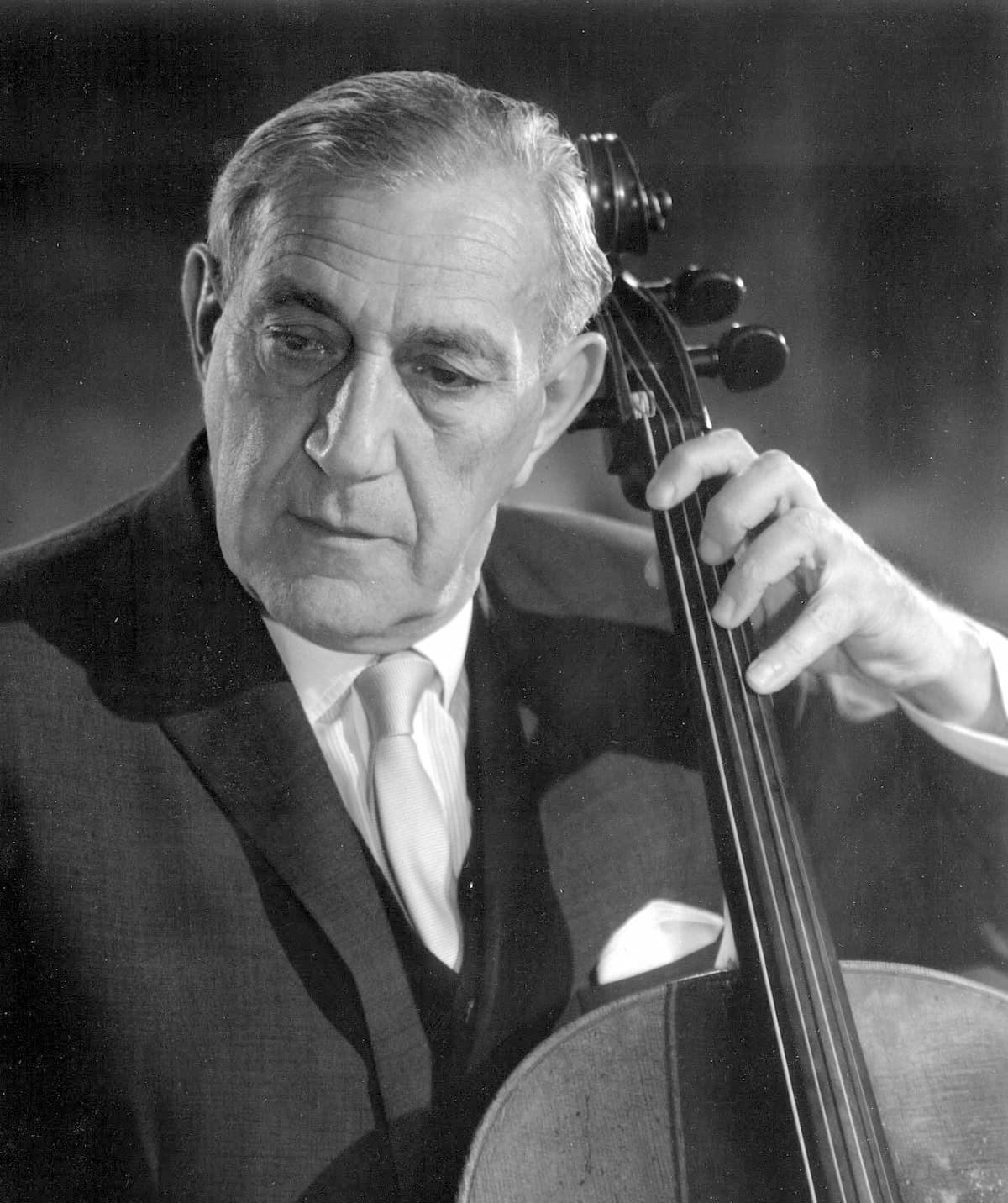
Gregor Piatigorsky
In addition to a glittering performing and teaching career, Piatigorsky was also a skilled arranger, assisting Stravinsky in preparing the “Suite Italienne” and producing numerous transcriptions for the cello. However, Piatigorsky was also a composer, crafting his Variations on a Theme of Paganini for cello and orchestra in 1946. It was orchestrated by his longtime accompanist Ralph Berkowitz, and later transcribed for cello and piano. Interestingly, each of the fifteen variations portrays one of Piatigorsky’s musical colleagues. The theme, not unexpectedly, originates in Paganini’s Caprice No. 24.
Gregor Piatigorsky: Variations on a Theme of Paganini, “Theme” (Wendy Warner, cello; Eileen Buck, piano)

Pablo Casals
It is entirely fitting that Piatigorsky commemorates Pablo Casals in “Variations 1.” He was, after all, known as the pre-eminent cellist of the first half of the 20th century and one of the greatest cellists of all time. In fact, Fritz Kreisler described him as “the greatest man who ever drew a bow.” When Pablo Casals was asked at the age of 93 why he continued to practice the cello three hours a day, he said, “I’m beginning to notice some improvements.” Casals recorded throughout his career and is perhaps best remembered for his recording of the Bach Cello Suites; hence, Piatigorsky composed a smooth legato variation with delicious octaves in the lower register of the piano.
Gregor Piatigorsky: Variations on a Theme of Paganini, Variation 1 (Pablo Casals) (Wendy Warner, cello; Eileen Buck, piano)
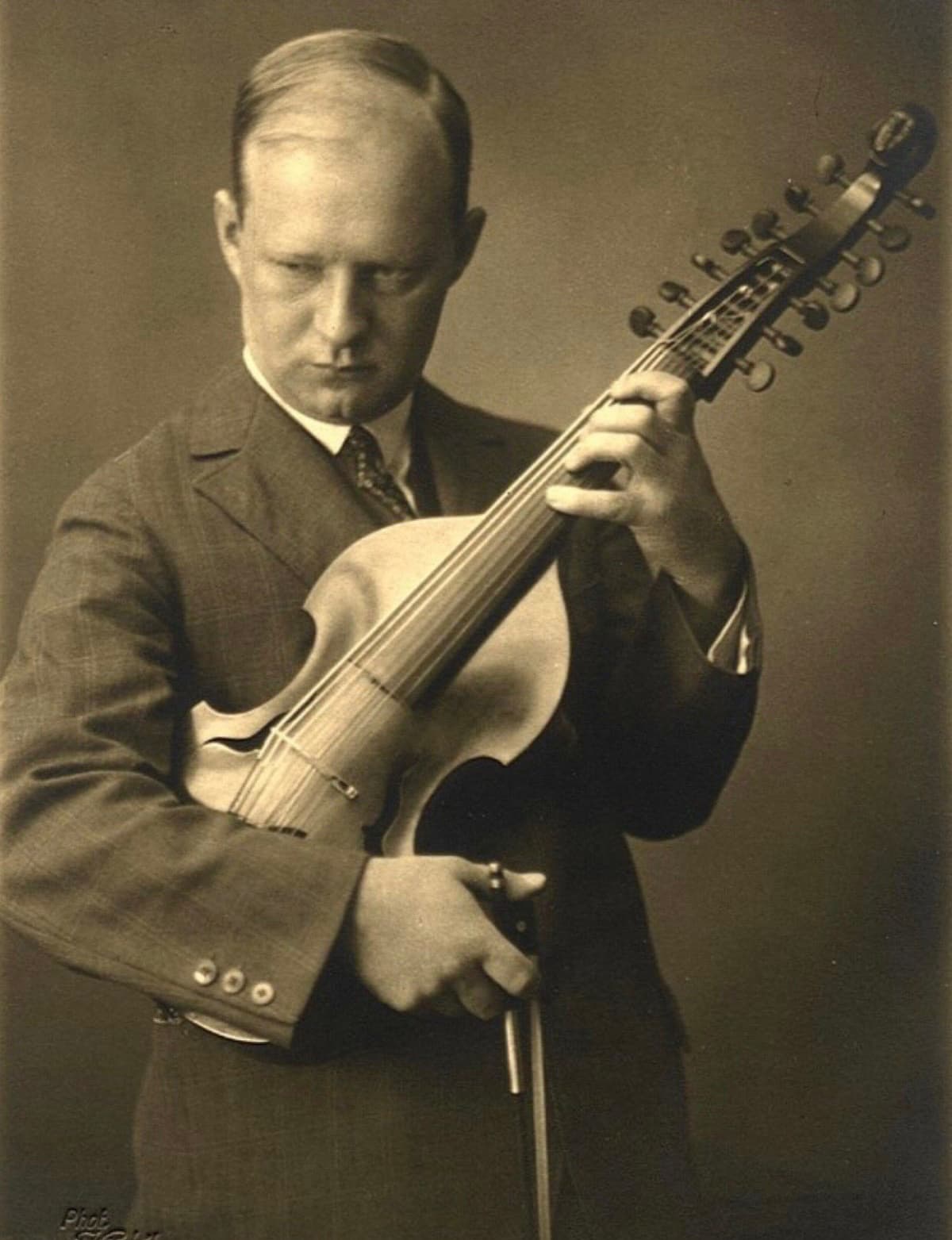
Hindemith and his viola d’amore
“Variations 2” is dedicated to Paul Hindemith, one of the most precocious musical talents in the world of music. Whatever he touched, he almost instantly mastered. He started violin lessons at an early age and was admitted to the Frankfurt Conservatory at age 12. He soon became an accomplished performer on several instruments, most notably the clarinet and the piano, and also the violin and viola. At age 19, he was appointed first violinist of the Frankfurt Opera Orchestra, and Piatigorsky celebrates Hindemith’s talents with forceful dynamics, strong accents, and rapid passage works.
Gregor Piatigorsky: Variations on a Theme of Paganini, Variation 2 (Paul Hindemith) (Wendy Warner, cello; Eileen Buck, piano)
The Georgian-born cellist Raya Garbousova made her formal debut in Moscow in 1923 and left the Soviet Union in 1925. She first lived and performed in Europe and emigrated to the United States in 1939. Garbousova performed with many of the world’s leading orchestras and conductors, but she was particularly well known for her performing the cello music of Samuel Barber. In fact, Barber wrote his cello concerto for her and Garbousova performed the world premiere with Koussevitzky and the Boston Symphony Orchestra in 1946. János Starker stated, “She did play on a level of artistry that earned her a place among the handful of true greats of the century.” The variation dedicated to Garbousova features fleeting cello figurations over syncopated eighth-note chords in the piano.
Gregor Piatigorsky: Variations on a Theme of Paganini, Variation 3 (Raya Garbousova) (Wendy Warner, cello; Eileen Buck, piano)
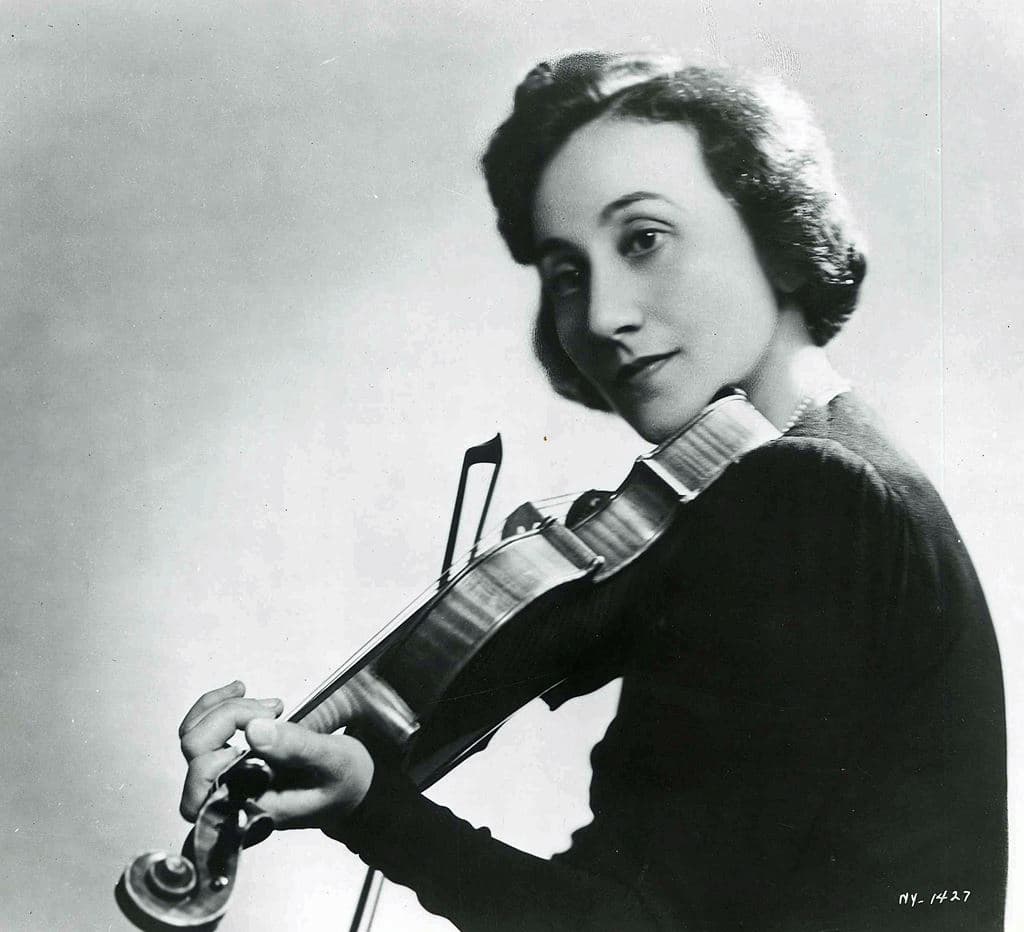
Erica Morini
The Viennese-born child prodigy Erica Morini made her public debut at the Leipzig Gewandhaus at the age of 12, and she was immediately hailed as “the equal of the most famous of the younger generation of violinists.” Her debut in New York at the age of seventeen caused a musical sensation, and a music critic wrote, “Miss Morini is probably the greatest woman violinist who ever lived.” Morini was decidedly unhappy with that assessment and replied, “A violinist is a violinist, and I am to be judged as one, not as a female musician.” The Piatigorsky variation in her honour features double-stops and octaves for the cellist, which are echoed by brief piano comments.
Gregor Piatigorsky: Variations on a Theme of Paganini, Variation 4 (Erica Morini) (Wendy Warner, cello; Eileen Buck, piano)
The English cellist Felix Salmond is particularly well known for his association with the music of Edward Elgar. Already a much-respected performer, World War I prevented Salmon from developing an international career, and thus, he focused on chamber music instead. He played in the premieres of the Elgar String Quartet in E minor and Piano Quintet in A minor on 21 May 1919 at Wigmore Hall. Elgar was enchanted by his playing and entrusted Salmond with the solo part of his Cello Concerto in E minor. Like so many of his European colleagues, he settled in America and was appointed to the faculty at the Mannes School of Music and the Juilliard School, and eventually became the head of the cello faculty at the Curtis Institute of Music. Piatigorsky infuses his “Variation 5” with a gently rocking Siciliano rhythm, framing a gentle lyricism in both parts.
Gregor Piatigorsky: Variations on a Theme of Paganini, Variation 5 (Felix Salmond) (Wendy Warner, cello; Eileen Buck, piano)
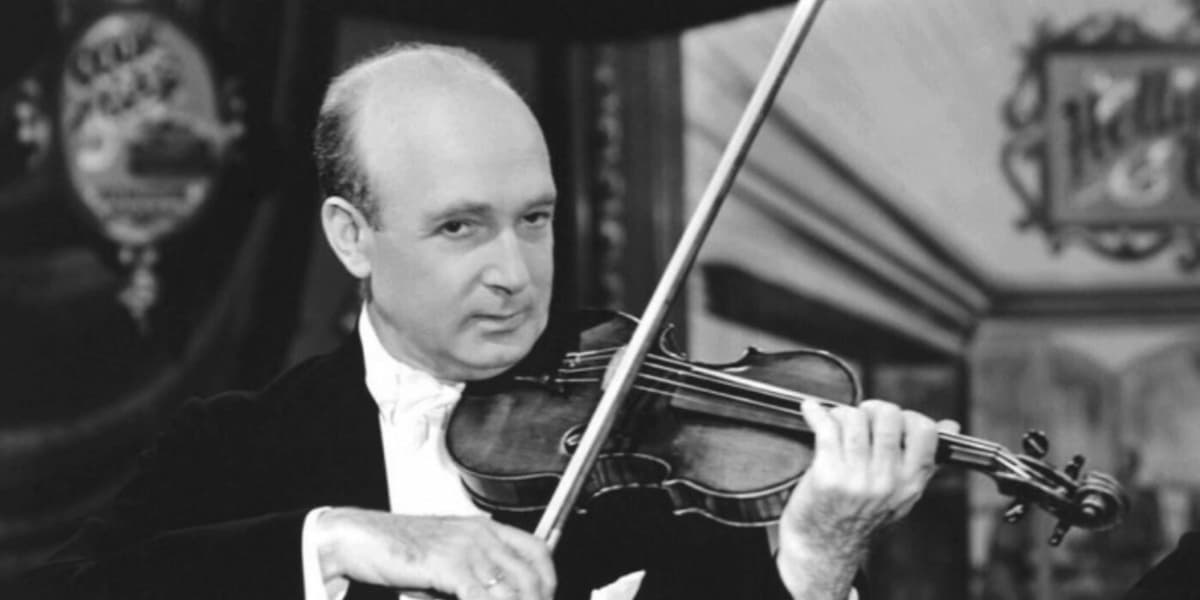
Joseph Szigeti
An abrupt harmonic shift in the piano takes us without a break into a variation honouring the Hungarian violinist Joseph Szigeti. A student of Jenö Hubay, Szigeti became good friends with Béla Bartók. In time, he developed a thoughtful and intellectual approach to music that eventually earned him the nickname “The Scholarly Virtuoso.” A scholar writes, “Szigeti’s performing technique was not always flawless, and his tone lacked sensuous beauty, although it acquired a spiritual quality in moments of inspiration … Szigeti held the bow in an old-fashioned way, with the elbow close to the body, and produced much emphatic power, but not without extraneous sounds. Minor reservations, however, were swept aside by the force of his musical personality.”
Gregor Piatigorsky: Variations on a Theme of Paganini, Variation 6 (Joseph Szigeti) (Wendy Warner, cello; Eileen Buck, piano)
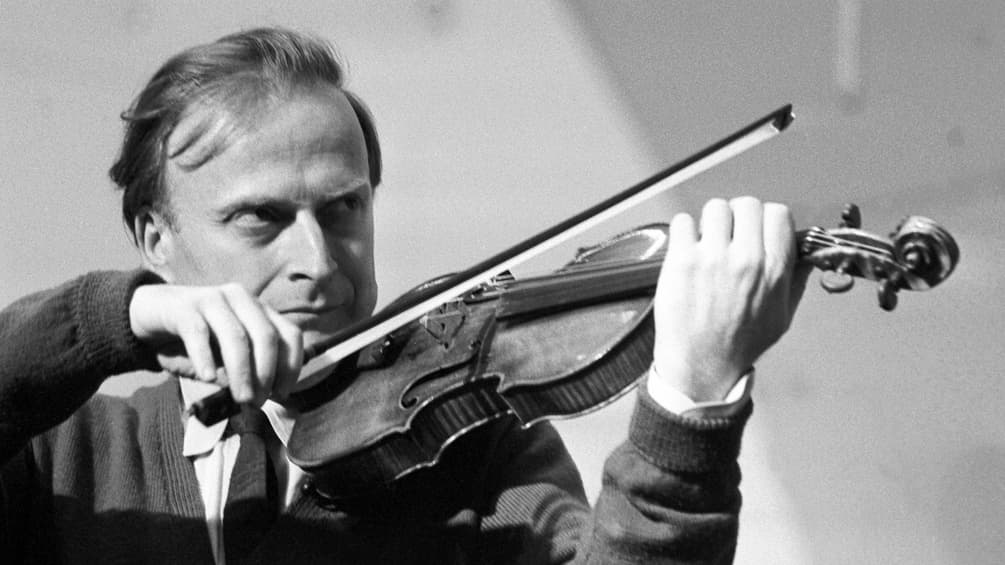
Yehudi Menuhin
Considered one of the greatest violinists of the 10th century, Yehudi Menuhin stepped onto the international stage at the age of seven with the San Francisco Symphony Orchestra. Menuhin was a visionary artist who saw music as a way of making peace. He believed the music he played to be “a form of human healing, out of which we might make peace with ourselves.” A strong humanitarian commitment took him into the concentration camps soon after the end of the Second World War. Later, he helped send young musicians to play in prisons and hospitals. Menuhin wrote, “I was gazing in my usual state of being half absent in my own world and half in the present. I have usually been able to retire in this way. I was also thinking that my life was tied up with the instrument and would I do it justice?”
Gregor Piatigorsky: Variations on a Theme of Paganini, Variation 7 (Yehudi Menuhin) (Wendy Warner, cello; Eileen Buck, piano)
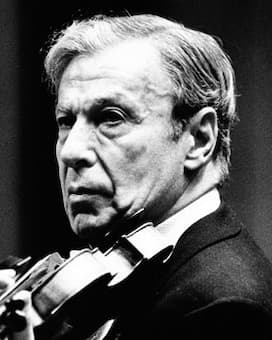
Nathan Milstein
“Variation 8” portraits the exceptional violinist Nathan Milstein, whose playing was “celebrated for his technical ease, aristocratic poise, mellifluous bowing and tonal perfection.” Born in the Ukrainian city of Odessa he became a student of the famed Leopold Auer at the St Petersburg Conservatory at the age of 11. Milstein performed a number of concerts in and around Odessa at the time of the 1917 Russian Revolution, and he toured with Vladimir Horowitz in 1921. Eventually, Milstein, like so many others before and after him, left the Soviet Union and settled in New York. The Piatigorsky “Milstein Variation” features rapid cello runs that emphasize the virtuosic playing of Milstein.
Gregor Piatigorsky: Variations on a Theme of Paganini, Variation 8 (Nathan Milstein) (Wendy Warner, cello; Eileen Buck, piano)

Fritz Kreisler, 1912
Violinist Fritz Kreisler was one of the great musical personalities of the early 20th century. An easy-going and charming personality combined with insightful interpretations and technical mastery to produce memorable recordings and live performances. Some say that Kreisler was the most popular and highly-rated artist on his instrument since Paganini. Kreisler also dabbled in composition and entertained his audiences with about 30 original compositions for violin and piano. He used them as encore pieces, combining his expert knowledge of the possibilities of his instrument with an exceptional gift for melody. No wonder that the Piatogorsky portrait of Fritz Kreisler is a melodious, relaxed and tuneful variation.
Gregor Piatigorsky: Variations on a Theme of Paganini, Variation 9 (Fritz Kreisler) (Wendy Warner, cello; Eileen Buck, piano)
As we have heard so far, Piatigorsky had a very keen ear for the stylistic and technical subtleties in the performances of his most famous colleagues. As such, it’s interesting to hear how Piatigorsky encoded his own personality and playing style. “Variation 10,” in fact, is his self-portrait. Critics considered Piatigorsky “the greatest string player of all time, possessing a glorious low-register sound characterized by a distinctive fast and intense vibrato, who took cello technique to dazzling new heights.” For Piatigorsky, however, technical ability was simply a tool to explore the subtlest shades of articulation and a prerequisite for any deeply expressive musician. In his restless “self-portrait,” I hear an exquisite and inquisitive musician who never stops exploring and never tires of learning.
Gregor Piatigorsky: Variations on a Theme of Paganini, Variation 10 (self-portrait) (Wendy Warner, cello; Eileen Buck, piano)
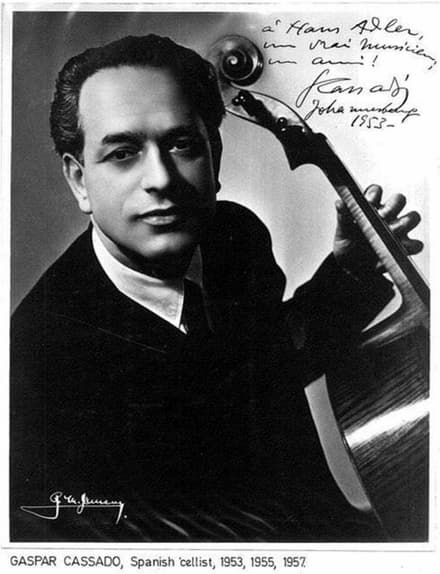
Gaspar Cassadó
“Variation 11” is dedicated to the Spanish cellist and composer Gaspar Cassadó. He took his first cello lessons at the age of seven and became a student of Pablo Casals at the age of nine. A scholarship to Paris also accorded him the opportunity to study composition with Manuel de Falla and Maurice Ravel. Cassado eventually settled in Florence, where he lived for over thirty years. He performed with the leading conductors of his time, and as a cellist, he is described as “more austere and noble than flamboyant in his approach.” He formed a cello-piano duo with his great friend Alicia de Larrocha, and Piatigorsky musically encoded him in a variation featuring triplets, grace notes and various chords.
Gregor Piatigorsky: Variations on a Theme of Paganini, Variation 11 (Gaspar Cassado) (Wendy Warner, cello; Eileen Buck, piano)
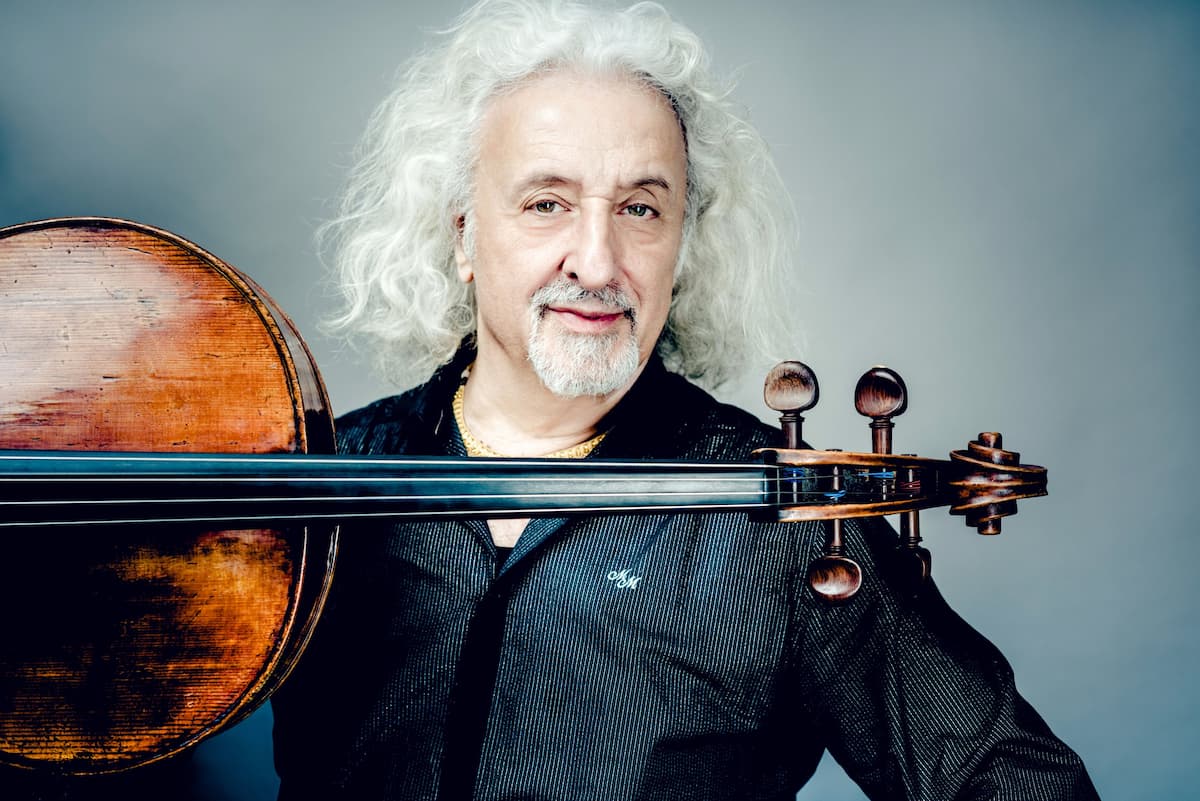
Mischa Maisky
“Variation 12” is taken by one of the greatest virtuosos of the time, the violinist Mischa Elman. Critics raved about his “mastery of utilizing the bow to create a wide range of colors.” Mischa was a child prodigy, and he was immediately accepted into the class of the famed teacher Leopold Auer. Elman left the Soviet Union and made his Berlin debut in 1904. He also played the British premiere of Glazunov’s Violin Concerto in A minor and, subsequently, the world premiere of Bohuslav Martinů‘s second concerto, which was written for him. Elman’s recording legacy spans more than six decades, and Piatigorsky’s “Elman Variation” features a restless piano and a cello line characterized by offbeat accents.
Gregor Piatigorsky: Variations on a Theme of Paganini, Variation 12 (Mischa Elman) (Wendy Warner, cello; Eileen Buck, piano)
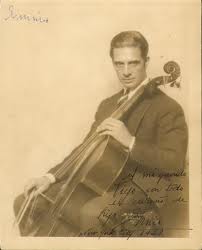
Ennio Bolognini
Pablo Casals praised the Argentine-born Ennio Bolognini as “the greatest cello talent I ever heard in my life,” and Gregor Piatigorsky said, “No, I am not the greatest cellist in the world, neither is Feuermann. The greatest is the Argentine Bolognini.” Bolognini hailed from Buenos Aires and, with the encouragement of Arturo Toscanini—who was Ennio’s godfather—began his career as a cellist. Ennio’s exceptional talent actually led Toscanini to nickname him “Genius.” Ennio made his performance debut at the age of 12, and at the age of 17, he performed Le Cygne, accompanied by Saint-Saëns himself, and later the Richard Strauss cello sonata, also with its composer at the piano. As he continued his musical education, he also became a professional boxer and won the welterweight championship of South America. Actually, Ennio came to the United States to serve as a sparring partner for Luis Firpo, “in preparation for Firpo’s legendary world heavyweight championship fight against Jack Dempsey.” In addition, he made most of his musical career as a flamenco guitarist and a cellist. “Variation 13” featured rapid cello figuration and chromatic double-stops, with the piano providing forceful dynamic contrasts.
Gregor Piatigorsky: Variations on a Theme of Paganini, Variation 13 (Ennio Bolognini) (Wendy Warner, cello; Eileen Buck, piano)

Jascha Heifetz at Carnegie Hall, 1947
Jascha Heifetz may well be “regarded as the greatest violin virtuoso since Paganini, as he set all standards for 20th-century violin playing.” Itzhak Perlman once famously wrote, “The goals he set still remain, and for violinists today, it’s rather depressing that they may never really be attained again.” Jascha Heifetz was born into a Russian-Jewish family in Vilnius, Lithuania, and such were his special musical abilities that he received a small violin at the age of two. By the age of five, Jascha had started formal lessons and made his formal public debut at the age of eight. Already at that time, his public performances created a sensation, and the “police surrounded the boy when he finished playing to protect him from the surging crowd.” In his tribute to Heifetz, Piatigorsky features crisp staccato figures, trills and chromatic scale passages in the cello.
Gregor Piatigorsky: Variations on a Theme of Paganini, Variation 14 (Jascha Heifetz) (Wendy Warner, cello; Eileen Buck, piano)
A brief transitional passage connects us to the “Tempo di Marica,” dedicated to the one and only Vladimir Horowitz. By the 1940s, Horowitz had reached the pinnacle of fame in the United States. Described as a “tornado unleashed from the steppes,” Horowitz mesmerized audiences with interpretations that involved dynamic contrasts and exceptional range of tonal color, although he was rather consistently criticized for “illustrating that an astounding instrumental gift carries no guarantee about musical understanding.” Known for his thunderous fortissimo octaves, the “Horowitz Variation” features dramatic dynamic contrasts, stretching from a whispered pianissimo to a powerful fortissimo. We also find double stops and octaves in the cello that appear to mimic the piano figuration featured in Horowitz’s dramatic performing style. It all ends with a brilliant cello run and the expected thunderous keyboard chords.
For more of the best in classical music, sign up for our E-Newsletter
Gregor Piatigorsky: Variations on a Theme of Paganini, Tempo di Marcia (Vladimir Horowitz) (Wendy Warner, cello; Eileen Buck, piano)


